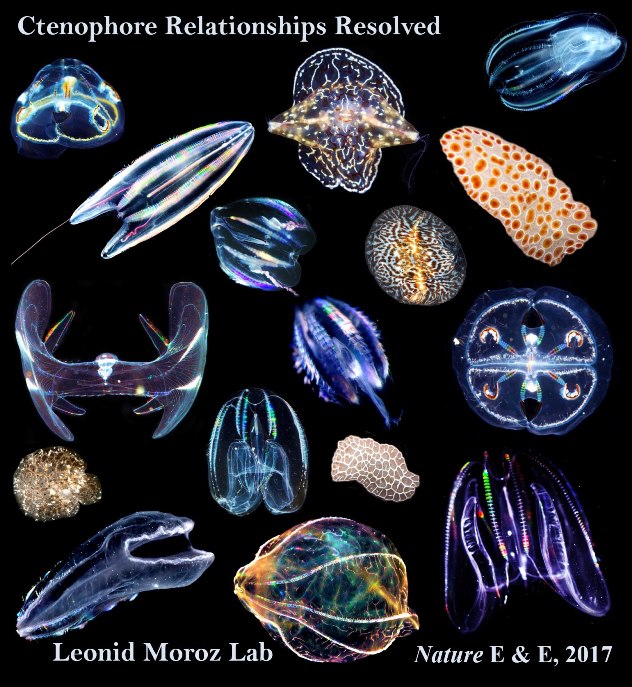 The Whitney Laboratory for Marine Bioscience
The Whitney Laboratory for Marine Bioscience

Congratulations to University of Florida Distinguished Professor of Neuroscience, Genetics, Biology and Chemistry Leonid Moroz, members of his lab (Peter Williams, Tatiana P. Moroz, Krishanu Mukherjee) and Gustav Pauley from Florida Museum of Natural History for their recent breakthrough paper in Nature Ecology & Evolution titled Ctenophore relationships and their placement as the sister group to all other animals. Comb jellies or Ctenophores are beautiful, highly diverse and enigmatic animals. Novel sequencing and genomic analyses of more than 30 ctenophore species, collected by Moroz and Pauley around the world, provide strong evidence that they are the sister group to all other animals and resolved evolutionary relationships of comb jellies to each other.
Moroz has pioneered comparative genomics and transcriptomics of ctenophores since 2007. In his quest to understand animal and neuronal evolution, he has been collecting comb jellies around the globe; and he started sequenced them, first in his lab at UF and then aboard oceanic research vessels, using the approach he called Ship-Seq. Thus, his team has gathered unique genetic data from species covering the broadest diversity of forms and lifestyles within this enigmatic group.
“Comb jellies are remarkably different from other animals, but they are extremely fragile marine organisms to study,” said Moroz. “Most of them can only be studied within their natural habitats. Thus, we must find them, perform experiments on a ship, make samples, and even sequence in oceans, sometimes thousands miles offshore. Every collection is an adventure by itself (from cold Antarctica to hot equatorial seas) to understand how Mother Nature made muscles and neurons in these creatures independently from the rest of animals. A fun job for a neuroscientist, and everyone, indeed!”